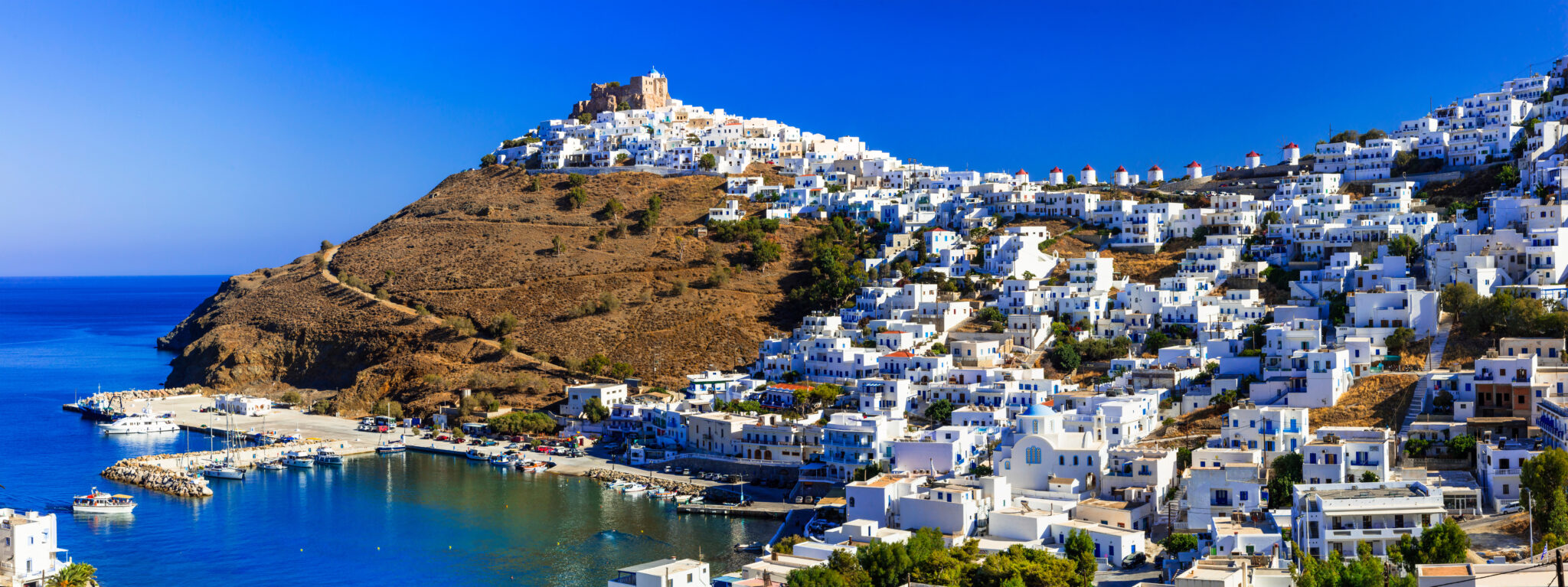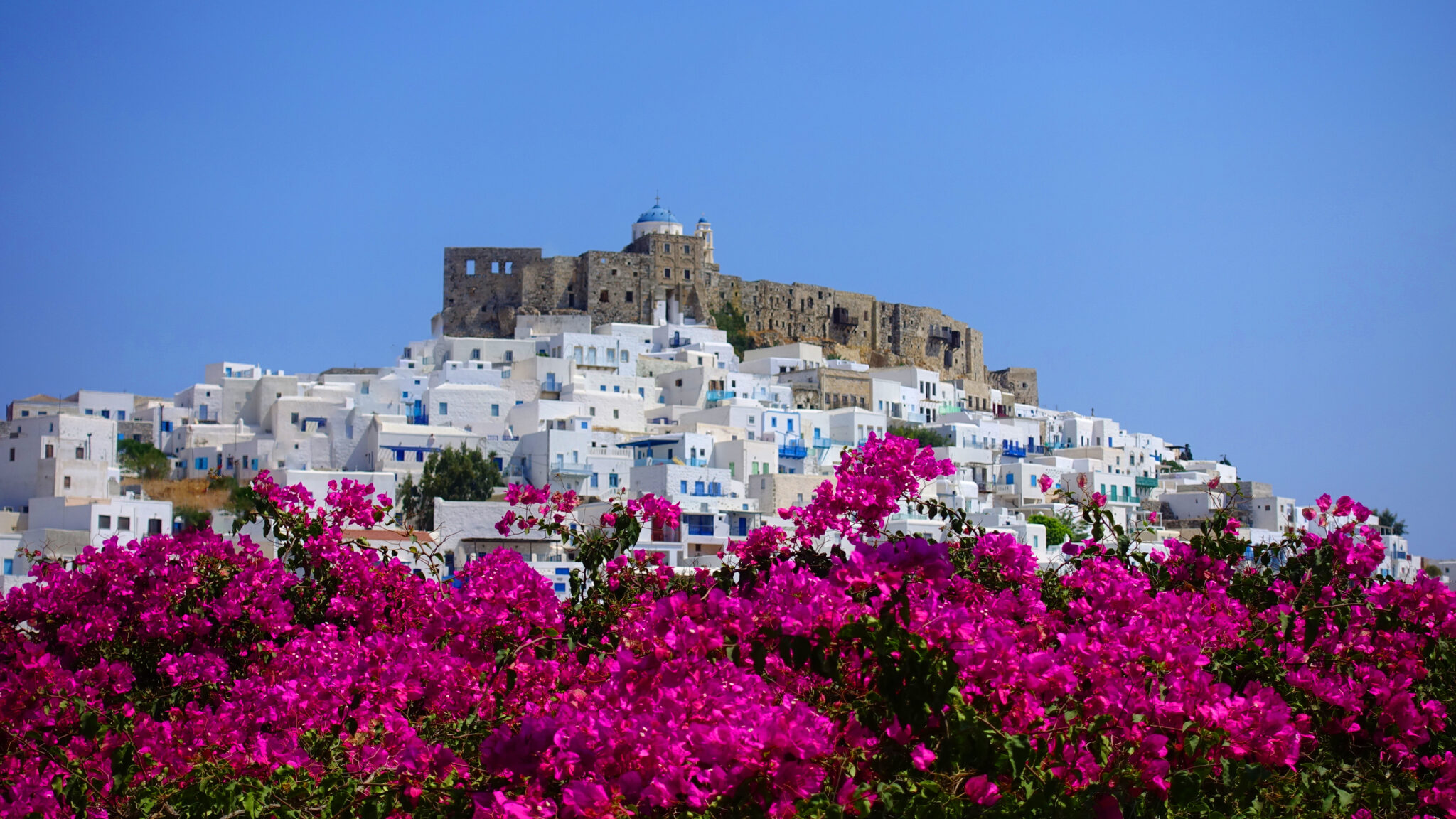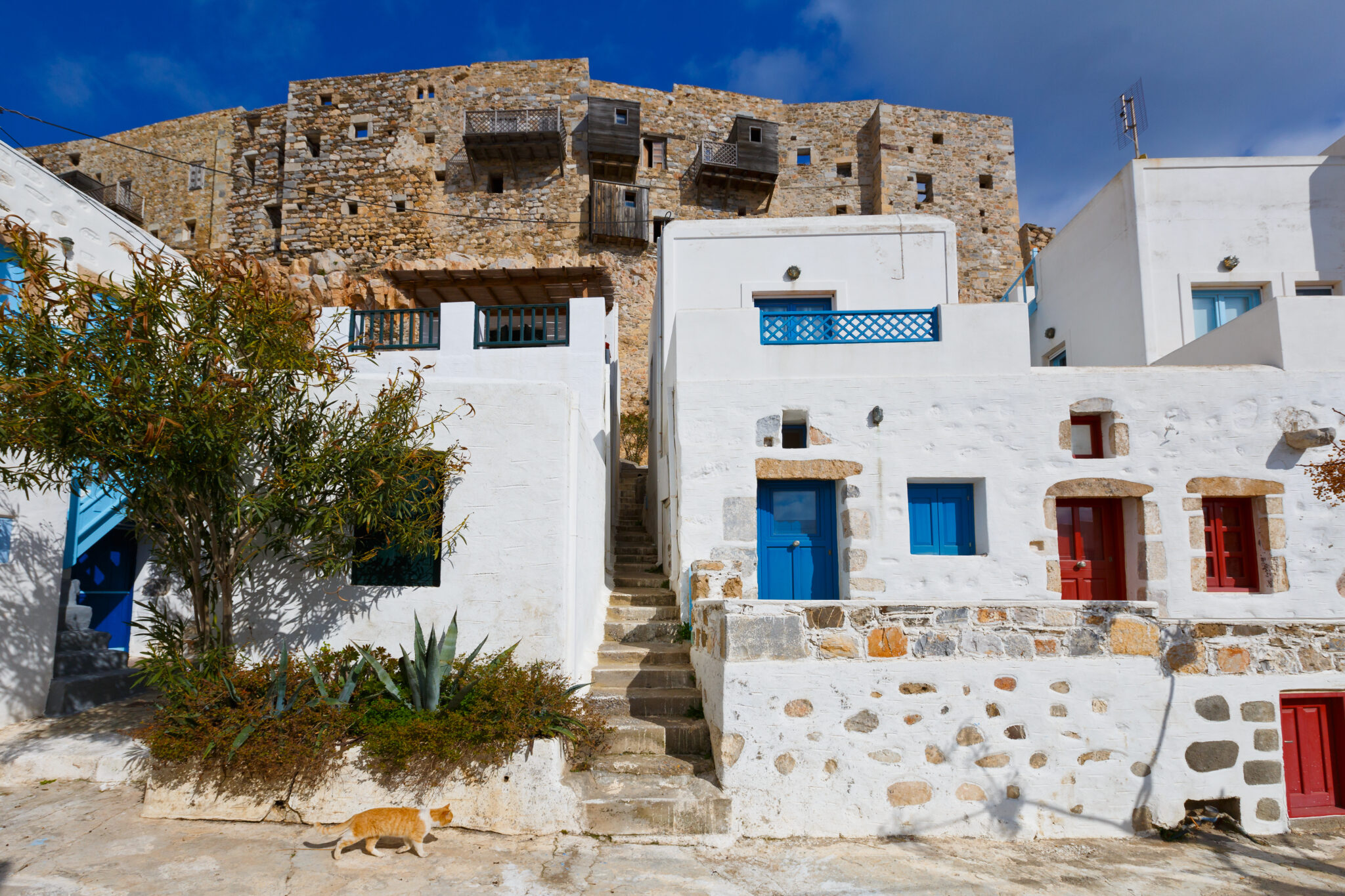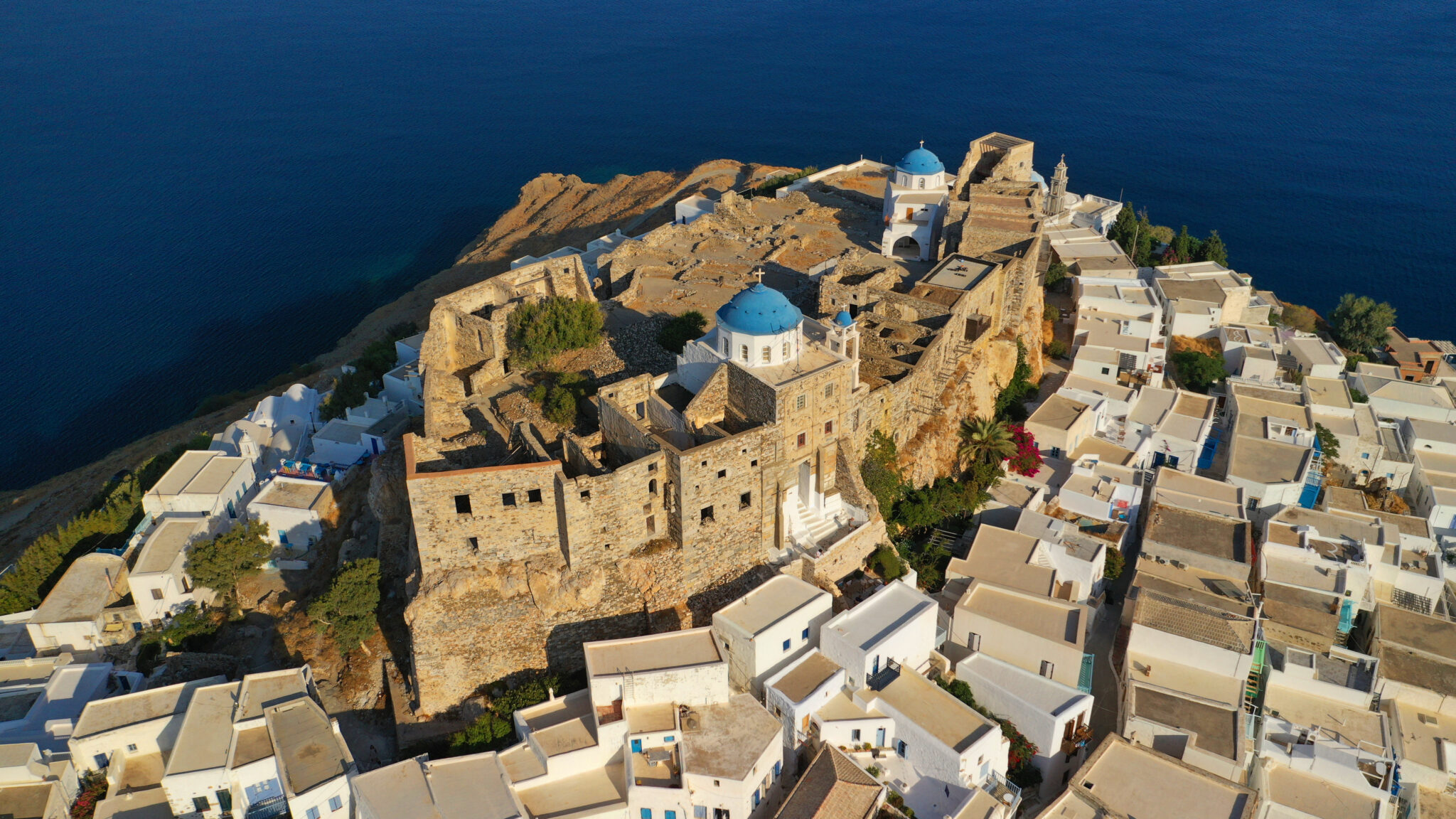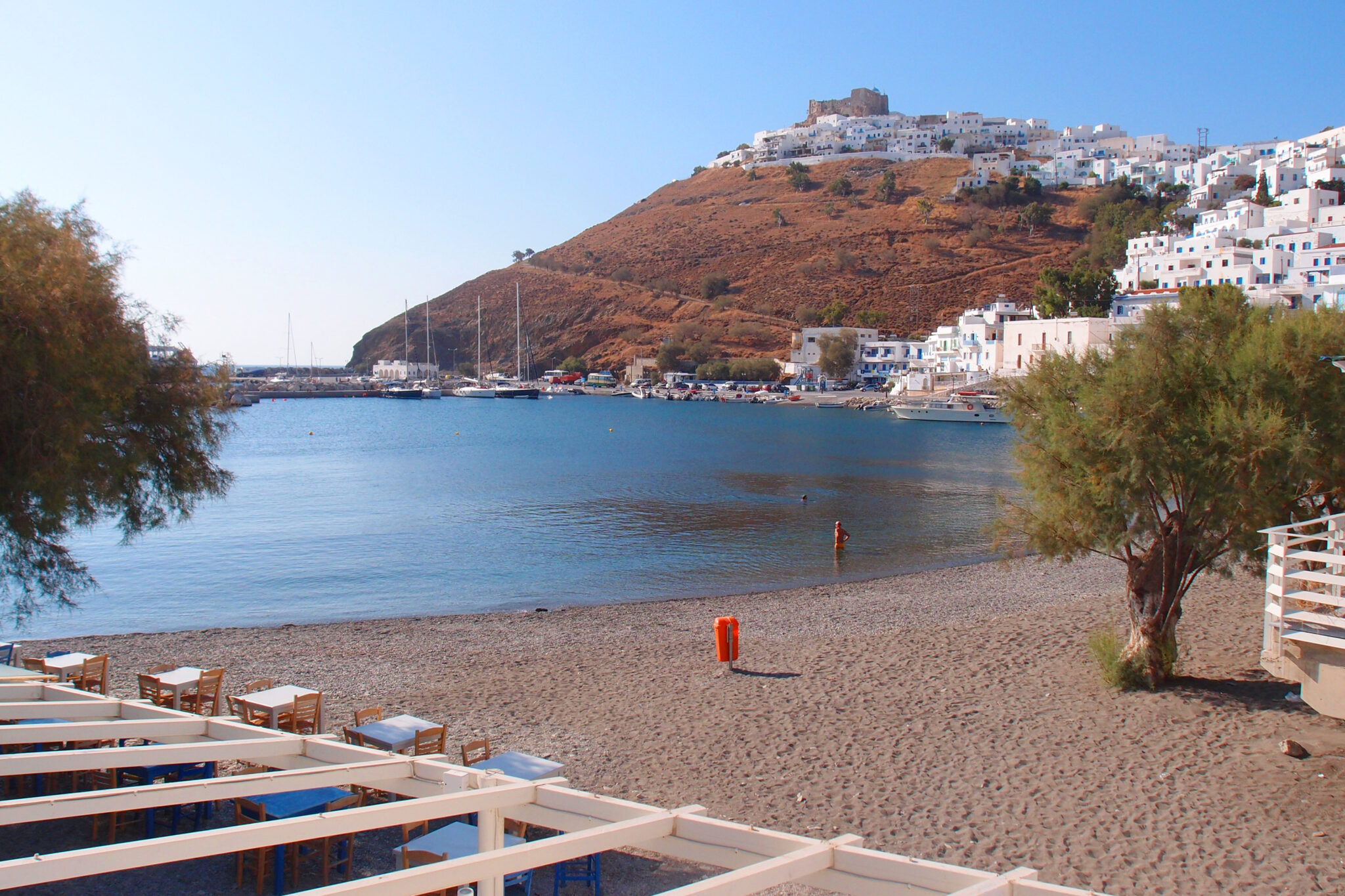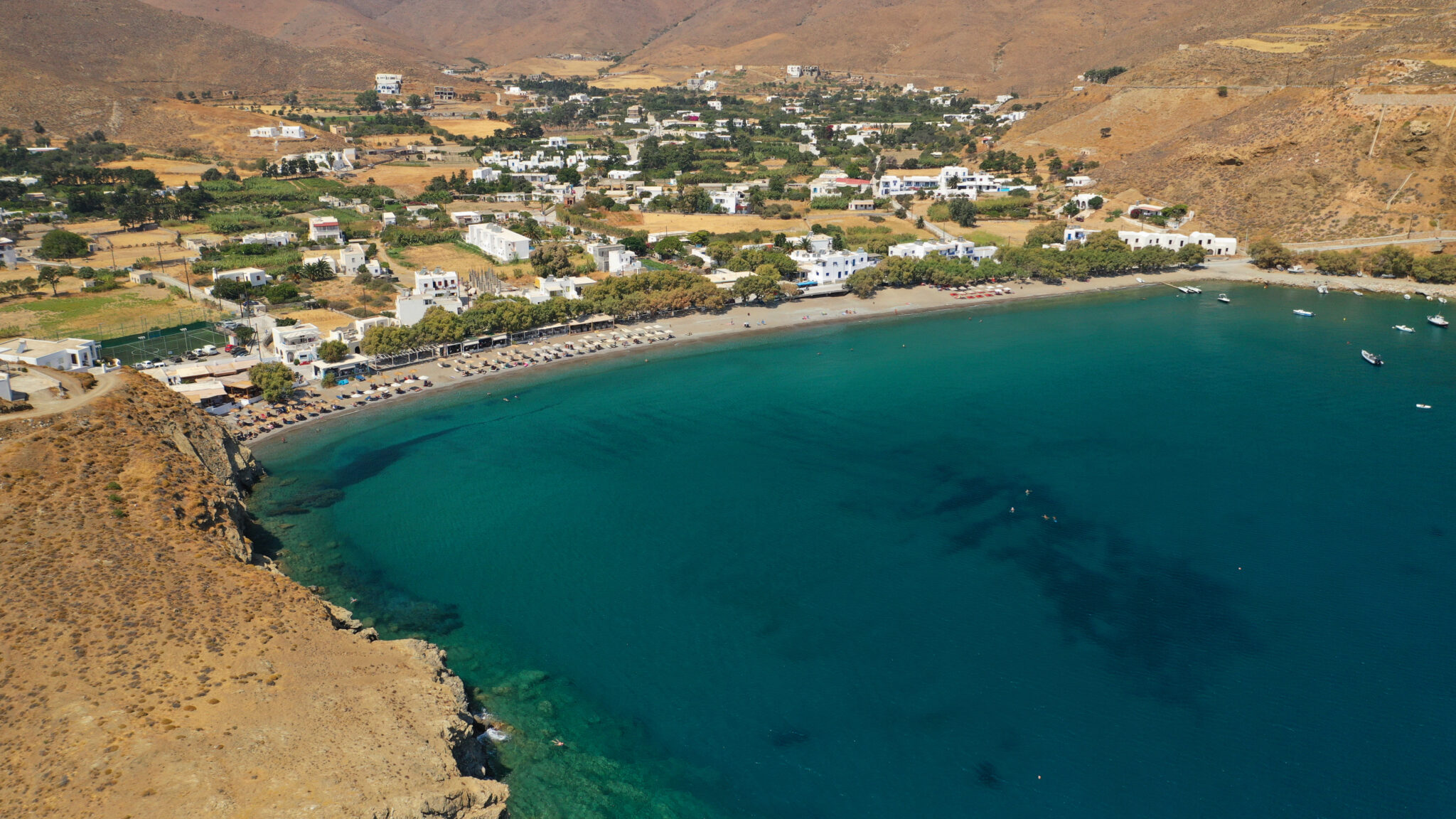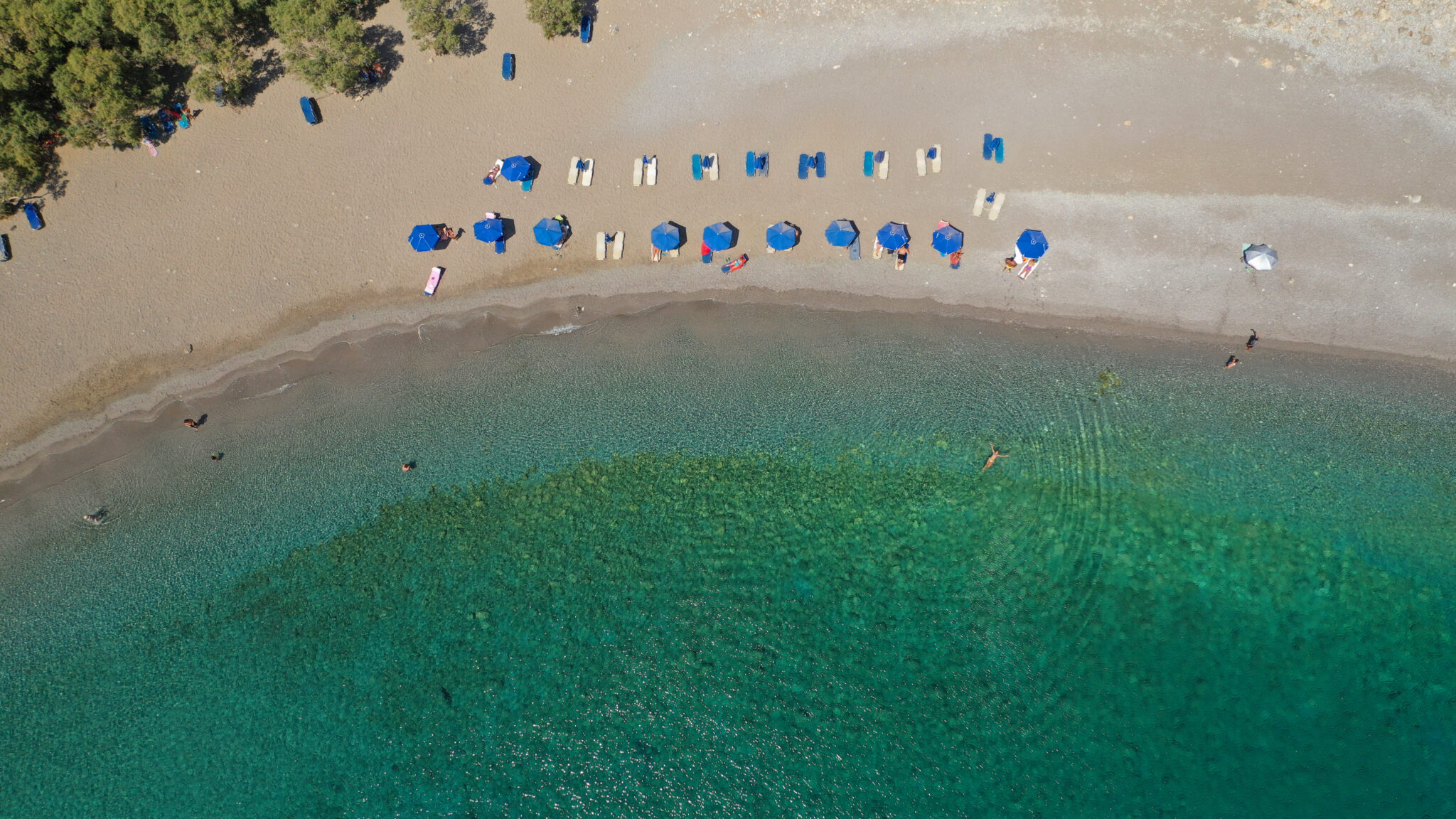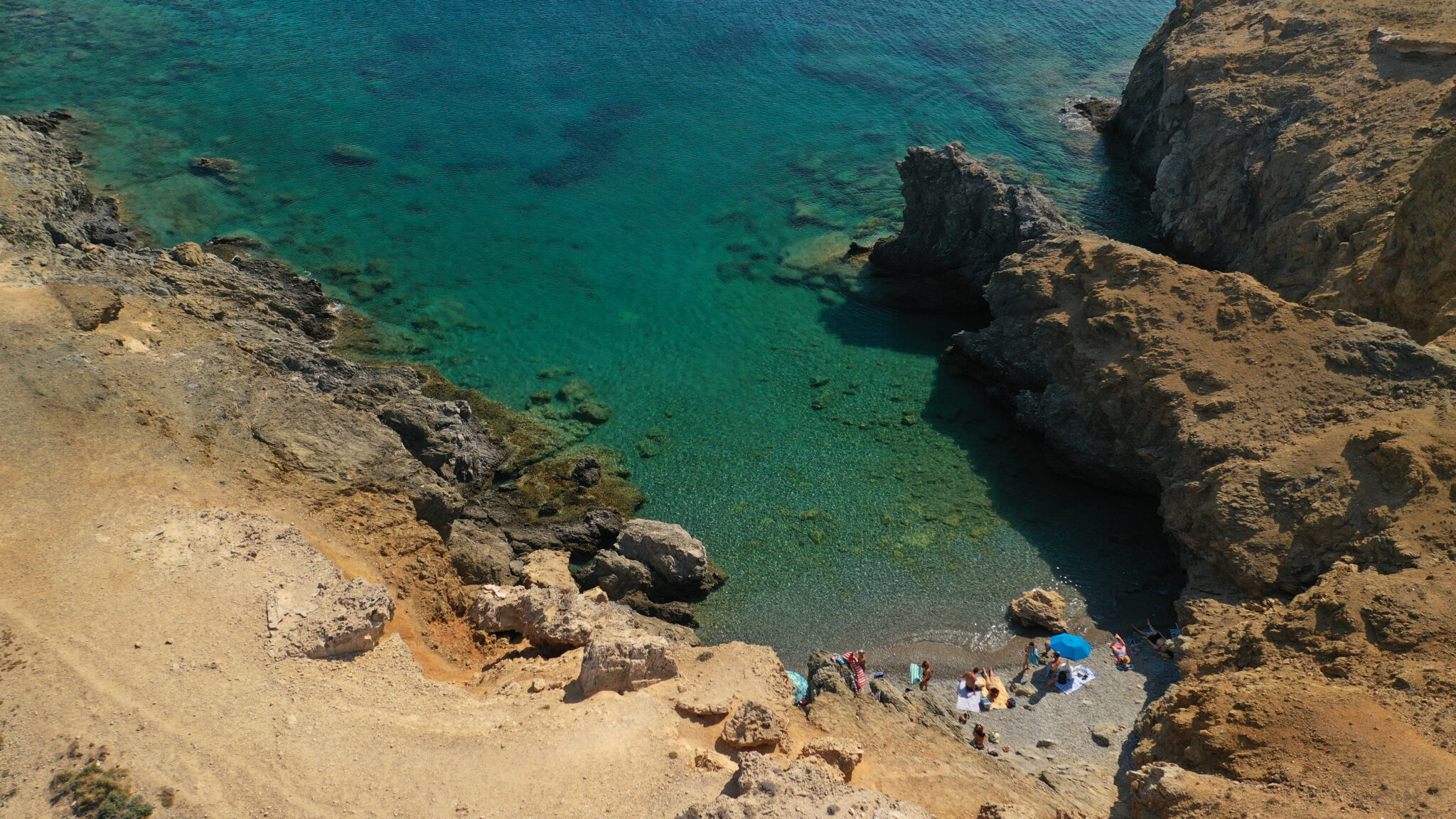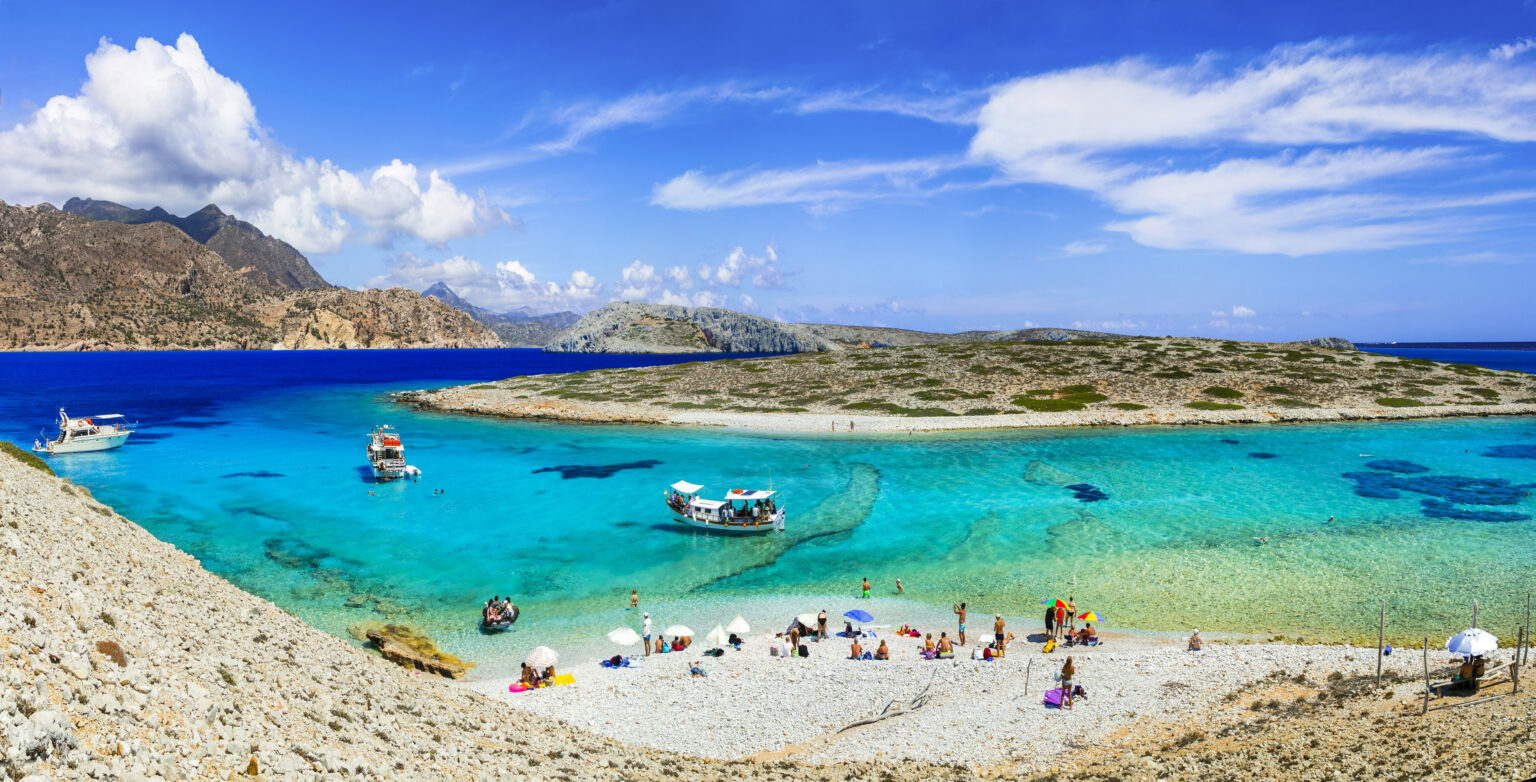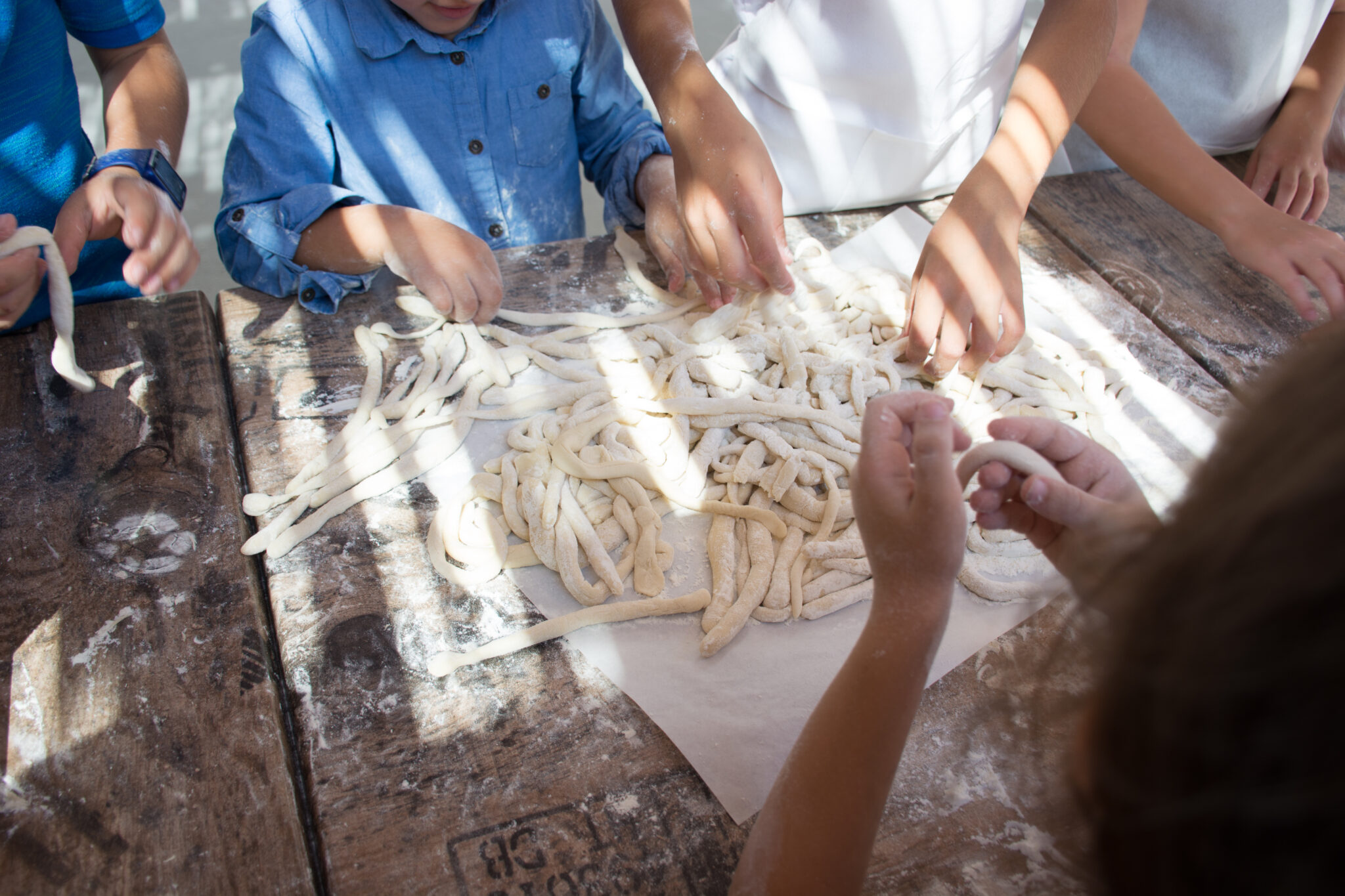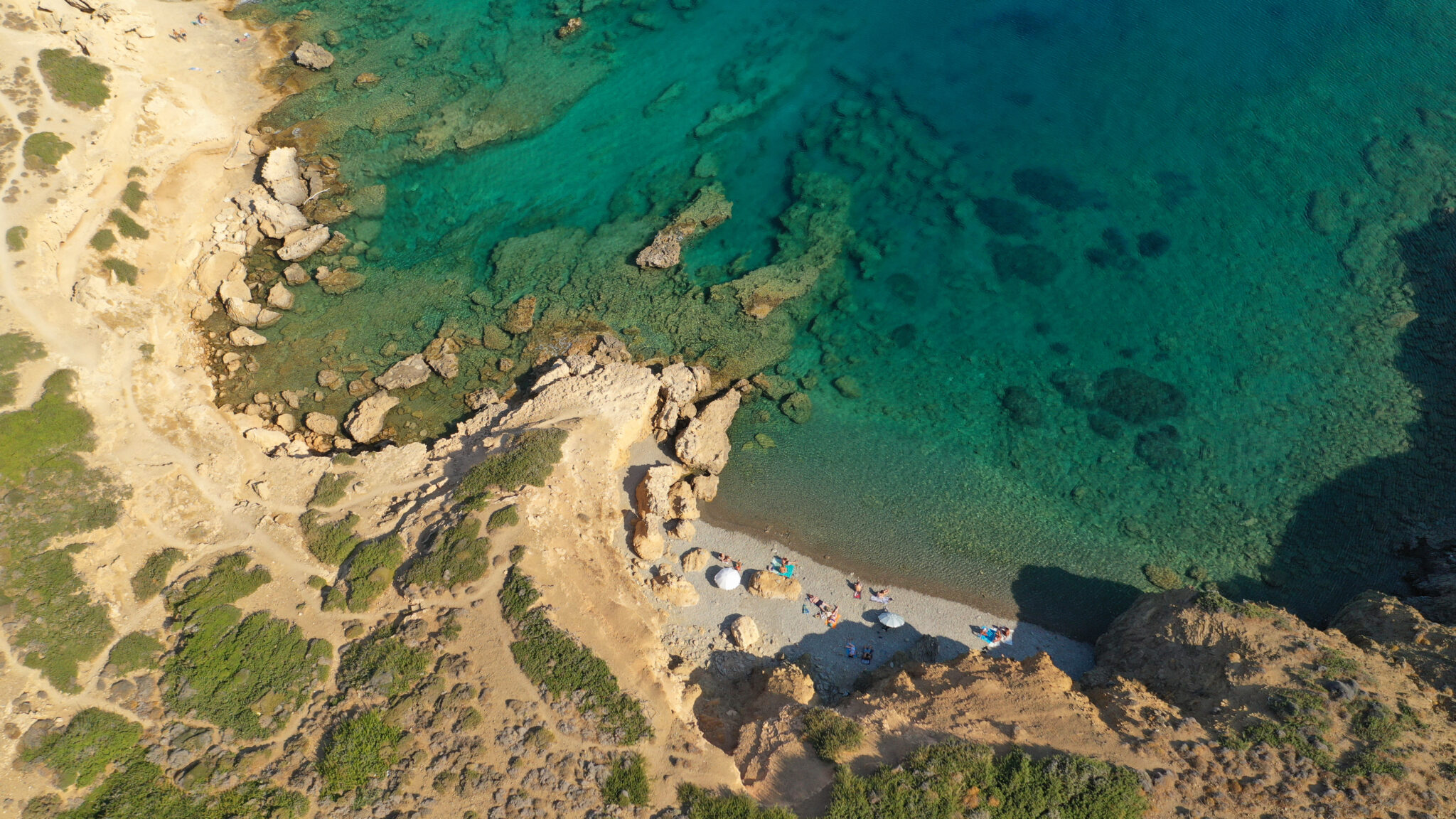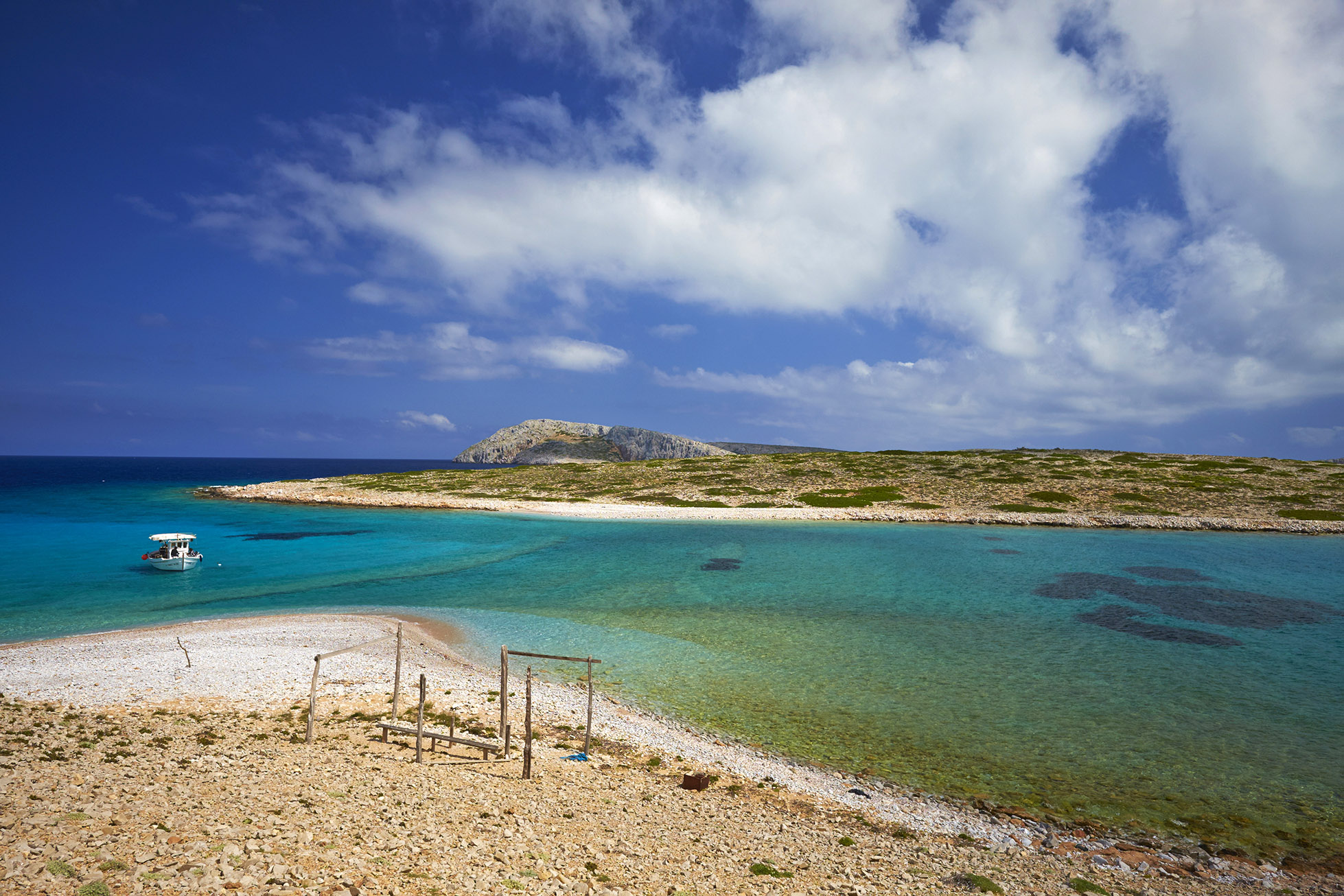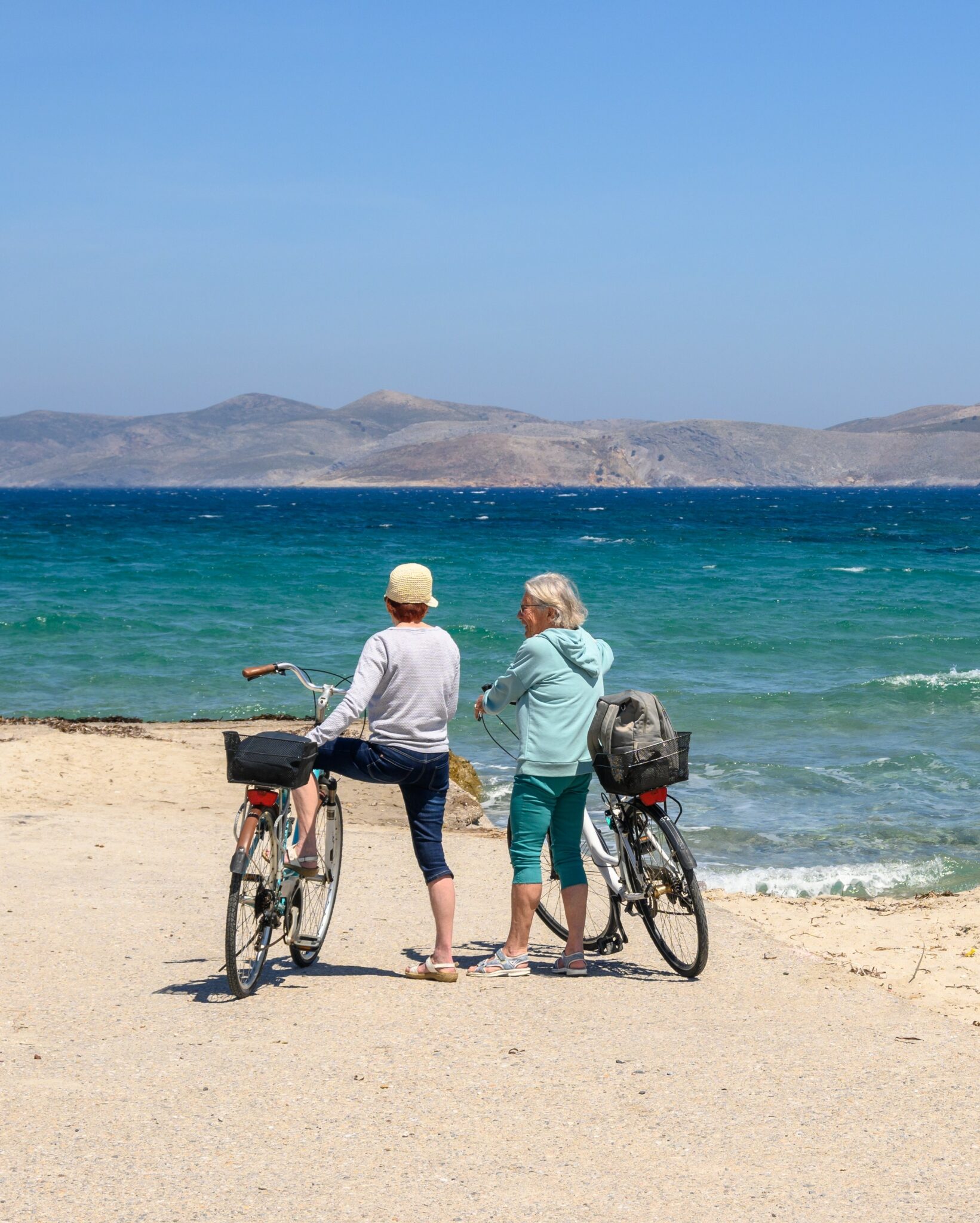Astypalaia or Astropalia –as the locals call it– might resemble the Cyclades, but it belongs to the Dodecanese and invites you on a magical journey into the endless blue of the Aegean Sea.
The day before our trip we shopped for the necessary snacks – it’s a nine-hour boat trip, and, for some reason, when you’re on a boat you always get the munchies. And the next morning, along with all the other passengers, we got on the boat heading to an island. An island we ignored all year long and now we turned to, asking it to offer us everything we dreamt of in the winter. And in the autumn. Even in the spring. We finished the snacks almost instantly. Thankfully, you’re bound to meet someone you know on the deck, and that way you can chat and catch up to pass the time. Just before you arrive at your destination, you’re always exhausted, you’ve had enough, can’t take it any longer. And then, you see the port, and just like that feel refreshed. Blissful, happy. You – and everyone else – made it. You’re here.
The port of Astypalaia isn’t much, you might even start second-guessing your decision not to get off the boat in Amorgos. The island has public transport, the buses are modern and environmentally friendly. The drivers are experienced and willing to help. The bus packed full, off it goes to the famed Hora.
The island is called Aegean’s butterfly, not just due to its shape, but also due to its aura. If you think about it, this island spends most of the year “closed off” – like inside a cocoon. And suddenly, in the summer, it transforms, it flutters vibrantly in front of your eyes for just a moment and then flies off again.
The bus goes on a narrow, not particularly well-made, winding road, outlining the island’s lower ‘wing’, passing Steno, the island’s backbone, between the two wings. For the biggest part of the ride the landscape is bare, and that’s why the view of the prettiest Hora of the Aegean Sea, as it appears in sight suddenly, stuns you the first time you set eyes on it. The little screams of awe that are heard each time, make the drivers proud.
Hora
All that is said about the island’s Hora is true. It’s stunningly beautiful, a unique combination of Cycladic simplicity and Dodecanese elegance. Built on the top of a hill, in order to be protected from the pirates, now Hora spreads up to Pera Gialos, its seaport. Small white houses with blue doors and windows, amphitheatrically built, start at the quiet bay and reach the impressive Venetian castle – a crown on Hora’s head – built by the Querini family.
Follow the uphill, maze-like, alleys that start at Pera Gialos and reach the castle, passing through quiet, picturesque neighbourhoods. You don’t have to look for beauty here, it envelops you; it’s everywhere, in the wonderfully preserved windmills that welcome you to town, in the wooden balconies that add a Dodecanese vibe to the distinctly Cycladic white houses, in the blooming bougainvillea trees, and in the countless happy cats that during the day search for a cool spot in the shade to rest. Climbing to the castle is not easy and the hot sun doesn’t help. That’s why Hora is peaceful during the day when the sun is up. The beast time to walk around Hora and visit the castle is early in the morning or around dusk.
There’s only one entrance to the castle, at its southwest side. It’s built on the ruins of the island’s ancient acropolis, that dates back to the Minoan times. There were two neighbourhoods within the castle’s walls, the one of Panagia tou Kastrou and that of Ai Giorgis. The two churches that gave them their names still stand within the walls with their blue domes matching the blue of the sky. The castle has had periods of being densely populated. In fact, in the open space in front of the church of Ai Giorgis, there used to be a large square where all the festivals and celebrations of the castle took place. Residents first started leaving the castle around 1943. Today, it’s the most important sight on the island and a spot where you can enjoy the amazing panoramic view, as well as the beautiful sunrise of Astropalia.
Just beneath the castle, it’s definitely worth visiting the Panagia Portaitissa church, the nicest church on the island and one of the best on all of the Aegean islands. It was built in the mid 18th century, and each year on August 15th it hosts the island’s three-day festival.
The beaches
Astropalia has many beaches but its road network is not great which means that access to most of the beaches is quite hard. The water is crystal clear everywhere, even the beach in Pera Gialos is ideal for a swim with the lovely view of the medieval castle. Many children go there early in the morning and compete for the best dive from the pier, while each year on August 16, the municipality and the island’s Cultural Association organise the so called “Koukania” that include sports events and some very unique games like egg-rides, yogurting and walking on sticks.
One of the best beaches on the island, overlooking Hora, is Agios Konstantinos. The chapel of the same name is in one corner of the beach, there’s a tavern and a beach bar on the beach, while there’s also a bunch of tamarisk trees –a rare occurrence on the island – offering shade so that you can spend the whole day on the beach.
Livadi is one of the best-known beaches on the island and is where everyone goes when the etesian winds start blowing in August. It’s fully serviced: umbrellas, sunbeds, tamarisk trees providing shade, cafés, restaurants and, more importantly, it’s protected from the winds. At Tzanakia, a bit further away from Livadi, you can have a great swim in crystal clear waters with stunning views of the castle. The beach is not serviced and, apart from very few spots near the rocks, has no shade, so it’s best to come equipped.
Many claim that Kaminakia, a natural bay on the west part of the island, with deep crystal waters and a few tamarisk trees providing shade, as well as Linda’s famed tavern on the beach, is the best sandy beach on the island. Vatses, sort of hidden in its wild surroundings, is the ideal beach to relax and feel like you’re on holiday. Its beach bar, at the edge of the beach stays open late. To visit the Agios Ioannis Rihtis beach you need to hike through goat and cow pens, and then go down a quite steep slope through a gorge. It’s a challenging route, but also quite unique. The green-blue waters and the feeling of seclusion will reward you, however the way back may prove harder. Access is possible by boat too and it’s much easier.
On the east wing of Astropalia, just after Steno, Plakes and Ble Limanaki are the top choices among both locals and tourists. Plakes is quite small and especially in August, gets too crowded. That’s why many choose to sit on the wide rocks at the edge of the beach. The water here is lovely, and the sea bottom is perfect for snorkelling. Ble Limanaki is equally small and scenic, with crystal waters and an amazing sea bottom.
Deserted exotic islands
You can’t come here and not visit the islands Koutsomitis and Kounoupes. Check the weather and the day with no winds take a boat from Pera Gialos for a day trip to paradise. Just a few nautical miles from Hora, Kounoupes has become very popular due to the double beach in the middle of the island, with the clear turquoise waters, where a lone canteen stands. In Koutsomitis, the beach is tiny, but the water is beyond real. The boats usually anchor far from the coast for unforgettable dives in the incredible turquoise waters that resemble a pool.
Astypalaia gastronomy
Due to its location, the island’s gastronomy is quite strong. Fishery, farming, and beekeeping thrive to this day. So, you’ll have good food on the island. On this apparently barren land, saffron, thyme, wild rosemary and lentisk grow, filling the air with unique aromas. In addition, the people of Astypalaia also make amazing thyme honey and produce great dairy products, like hlori cheese, and they use all these ingredients to make delicious baked goods like labropita, pougia, xerotigana and kitrinokouloura. The island also has its own homemade pasta, makarounes, and, of course, the local fishermen catch fresh fish and seafood.
The island’s cuisine is rich and has a variety of traditional recipes with the best of all being ‘labriano’ – local goat roast, stuffed with rice and pluck – that’s usually eaten in Easter, and is also served during the August festival. Other traditional dishes include ‘radista’ that is lentils cooked with trachanas (traditional type of pasta), octopus balls, Mediterranean parrotfish with onion, as well as stuffed vine leaves with rice and minced beef.
Another reason to go to Kaminakia beach is ‘Linda’s’ lovely tavern that uses ingredients they’ve grown themselves and serves delicious casserole dishes and traditional recipes (tel.: 0030 6972 290088). The canteen at Steno (tel.: 0030 6977 203219) also serves great casserole dishes by the sea. At Livadi beach, ‘Astropelos’ (tel.:0030 22430 61473) serves fresh fish and seafood prepared with great care, overlooking Hora. ‘Argo’ at Pera Gialos (tel.: 0030 22430 59854), apart from serving delicious dishes and probably the best pougia on the island, has great raki and rakomelo (raki with honey), while they also organise rebetiko nights. For homemade makarounes and a great selection of unusual and tasty Astypalaia dishes, go to ‘Agoni Grami’ in the heart of Hora, just across from the windmills (tel.: 0030 22430-62102).
Finally, the desserts – both traditional and not – that you can have on the island is reason enough to visit. Don’t leave the island before trying the cheesecake made with hlori or the scrumptious melopita at ‘Kolokitha’ in Pera Gialos (tel.: 0030 22430 62141), ice cream and traditional desserts covered in syrup at ‘Glikia Astypalaia’ (tel.: 0030 22430 62122), and fresh millefeuille from the café-dessert shop ‘O Marinos’ in Maltezana (tel: 0030 6977 746880). One thing is certain, Astopalia is extremely sweet and one visit is not enough. Until next time then.
Read Also:
Two beaches in one -Domata, the secluded beach of southwest Crete
Cape Tainaro: Roman baths, an imposing lighthouse and the most fascinating path on the Mani peninsula
5 impressive villas in Mykonos: cosmopolitan living combined with the endless blue of the Aegean Sea



